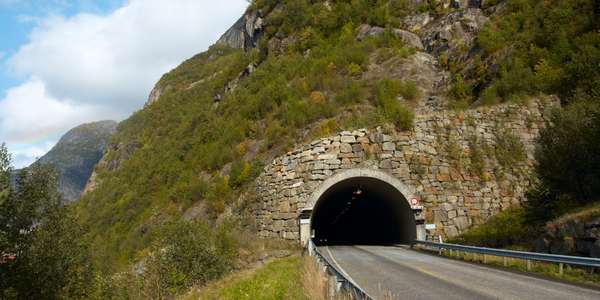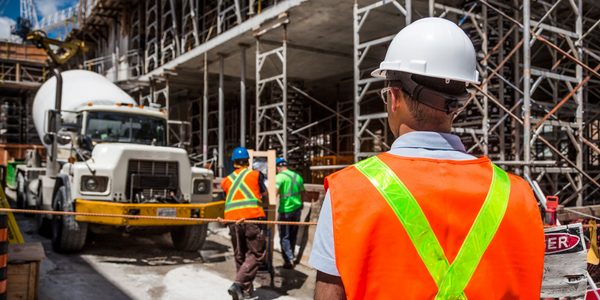公司规模
SME
地区
- America
国家
- United States
产品
- Acumatica Construction Edition
- ProEst Construction estimating
- SmartSheet
技术栈
- Cloud Computing
- Mobile Application
- API Integration
实施规模
- Enterprise-wide Deployment
影响指标
- Productivity Improvements
- Cost Savings
- Revenue Growth
技术
- 平台即服务 (PaaS) - 应用开发平台
适用行业
- 建筑与基础设施
适用功能
- 离散制造
- 采购
用例
- 施工管理
- 库存管理
服务
- 云规划/设计/实施服务
- 系统集成
关于客户
Hartzell Construction 是一家位于佛罗里达州庞帕诺比奇的建筑公司。该公司最初是一家油漆公司,后来转型为一家提供一系列建筑服务的公司,从混凝土修复到改造住宅、商业和市政建筑。该公司还计划提供管道服务和新建筑施工。Hartzell Construction 每年以 150 万至 200 万美元的速度增长,预计今年将达到 1500 万美元。该公司的老板 Anderson Pinto 计划在三年内将收入翻一番,并将其团队从 60 人扩大到 150 人以上。
挑战
位于南佛罗里达州的建筑公司 Hartzell Construction 的旧版软件 ProContractor 面临挑战。该软件难以使用,无法提供公司所需的见解、数据和后台基础。该公司不得不为供应商和分包商审批流程创建手动解决方法,这些流程冗长且容易出错。每个项目的纸质记录通常很难重建和核对,随着公司的发展,文件数量也在增加 - 堆积如山的文件和文件最终占满了整个房间。该公司还对 ProContractor 的每席位许可证感到失望,这些许可证价格昂贵,并且限制了可以同时访问系统的用户数量。
解决方案
Hartzell Construction 转向了 Acumatica Construction Edition,这是一款专为建筑管理量身定制的移动云软件解决方案。该软件管理项目、成本并提供全公司访问,在一个屏幕上连接机会、合同、时间表、预算、变更单、分包合同和合规性。这使建筑公司能够做出更多数据驱动的决策。选择 Acumatica Construction Edition 是因为它的易用性、移动应用程序可以在施工现场为项目经理提供关键信息以及其基于消费的定价结构。该公司实施了 Acumatica 模块,包括 CRM、财务、项目管理、库存、公司间、分销、现场服务和 Outlook 集成。该公司还在实施 SmartSheet、ProEst Construction 估算,并正在评估电子签名和条形码选项。
运营影响
数量效益

Case Study missing?
Start adding your own!
Register with your work email and create a new case study profile for your business.
相关案例.

Case Study
IoT System for Tunnel Construction
The Zenitaka Corporation ('Zenitaka') has two major business areas: its architectural business focuses on structures such as government buildings, office buildings, and commercial facilities, while its civil engineering business is targeted at structures such as tunnels, bridges and dams. Within these areas, there presented two issues that have always persisted in regard to the construction of mountain tunnels. These issues are 'improving safety" and "reducing energy consumption". Mountain tunnels construction requires a massive amount of electricity. This is because there are many kinds of electrical equipment being used day and night, including construction machinery, construction lighting, and ventilating fan. Despite this, the amount of power consumption is generally not tightly managed. In many cases, the exact amount of power consumption is only ascertained when the bill from the power company becomes available. Sometimes, corporations install demand-monitoring equipment to help curb the maximum power demanded. However, even in these cases, the devices only allow the total volume of power consumption to be ascertained, or they may issue warnings to prevent the contracted volume of power from being exceeded. In order to tackle the issue of reducing power consumption, it was first necessary to obtain an accurate breakdown of how much power was being used in each particular area. In other words, we needed to be able to visualize the amount of power being consumed. Safety, was also not being managed very rigorously. Even now, tunnel construction sites often use a 'name label' system for managing entry into the work site. Specifically, red labels with white reverse sides that bear the workers' names on both sides are displayed at the tunnel work site entrance. The workers themselves then flip the name label to the appropriate side when entering or exiting from the work site to indicate whether or not they are working inside the tunnel at any given time. If a worker forgets to flip his or her name label when entering or exiting from the tunnel, management cannot be performed effectively. In order to tackle the challenges mentioned above, Zenitaka decided to build a system that could improve the safety of tunnel construction as well as reduce the amount of power consumed. In other words, this new system would facilitate a clear picture of which workers were working in each location at the mountain tunnel construction site, as well as which processes were being carried out at those respective locations at any given time. The system would maintain the safety of all workers while also carefully controlling the electrical equipment to reduce unnecessary power consumption. Having decided on the concept, our next concern was whether there existed any kind of robust hardware that would not break down at the construction work site, that could move freely in response to changes in the working environment, and that could accurately detect workers and vehicles using radio frequency identification (RFID). Given that this system would involve many components that were new to Zenitaka, we decided to enlist the cooperation of E.I.Sol Co., Ltd. ('E.I.Sol') as our joint development partner, as they had provided us with a highly practical proposal.

Case Study
Splunk Partnership Ties Together Big Data & IoT Services
Splunk was faced with the need to meet emerging customer demands for interfacing IoT projects to its suite of services. The company required an IoT partner that would be able to easily and quickly integrate with its Splunk Enterprise platform, rather than allocating development resources and time to building out an IoT interface and application platform.

Case Study
Bridge monitoring in Hamburg Port
Kattwyk Bridge is used for both rail and road transport, and it has played an important role in the Port of Hamburg since 1973. However, the increasing pressure from traffic requires a monitoring solution. The goal of the project is to assess in real-time the bridge's status and dynamic responses to traffic and lift processes.

Case Study
Bellas Landscaping
Leading landscaping firm serving central Illinois streamlines operations with Samsara’s real-time fleet tracking solution: • 30+ vehicle fleet includes International Terrastar dump trucks and flatbeds, medium- and light-duty pickups from Ford and Chevrolet. Winter fleet includes of snow plows and salters.

Case Study
Condition Based Monitoring for Industrial Systems
A large construction aggregate plant operates 10 high horsepower Secondary Crusher Drive Motors and associated conveyor belts, producing 600 tons of product per hour. All heavy equipment requires maintenance, but the aggregate producer’s costs were greatly magnified any time that the necessary maintenance was unplanned and unscheduled. The product must be supplied to the customers on a tight time schedule to fulfill contracts, avoid penalties, and prevent the loss of future business. Furthermore, a sudden failure in one of the drive motors would cause rock to pile up in unwanted locations, extending the downtime and increasing the costs.Clearly, preventative maintenance was preferable to unexpected failures. So, twice each year, the company brought in an outside vendor to attach sensors to the motors, do vibration studies, measure bearing temperatures and attempt to assess the health of the motors. But that wasn’t enough. Unexpected breakdowns continued to occur. The aggregate producer decided to upgrade to a Condition Based Monitoring (CBM) sensor system that could continually monitor the motors in real time, apply data analytics to detect changes in motor behavior before they developed into major problems, and alert maintenance staff via email or text, anywhere they happened to be.A wired sensor network would have been cost prohibitive. An aggregate plant has numerous heavy vehicles moving around, so any cabling would have to be protected. But the plant covers 400 acres, and the cable would have to be trenched to numerous locations. Cable wasn’t going to work. The aggregate producer needed a wireless solution.








